Related Research Articles
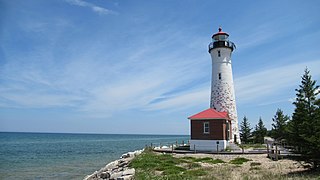
Crisp Point was one of five U.S. Life-Saving Service Stations along the coast of Lake Superior between Munising and Whitefish Point in the Upper Peninsula of Michigan. The lighthouse is within McMillan Township in Luce County.
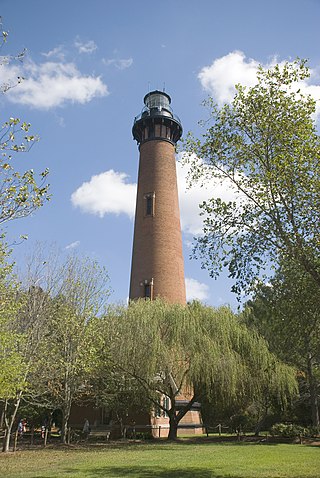
The Currituck Beach Light is a lighthouse located on the Outer Banks in Corolla, North Carolina. The Currituck Beach Light was added to the National Register of Historic Places on October 15, 1973.

East Brother Island Lighthouse is a lighthouse located on East Brother Island in San Rafael Bay, near the tip of Point San Pablo in Richmond, California. It marks the entrance to San Pablo Bay from San Francisco Bay.

The New Presque Isle Light was built in 1870, at Presque Isle, Michigan, east of Grand Lake, and sits on the namesake peninsula. It is one of 149 lighthouses in Michigan, more than any other state. Because of changing shoreline particularly, or alternatively deterioration of the original building, it is not uncommon for a replacement lighthouse to be placed in the vicinity of an earlier light, in this case, the Old Presque Isle Light.

The Devils Island Lighthouse is a lighthouse located on Devils Island, one of the Apostle Islands, in Lake Superior in Ashland County, Wisconsin, near the city of Bayfield. Among the Apostle Islands lighthouses—a testament to its remoteness—it was the last built, and the last automated and unmanned.

The Cana Island lighthouse is a lighthouse located just north of Baileys Harbor in Door County, Wisconsin, United States.

The Algoma Light or Algoma Pierhead Light is a lighthouse located near Algoma in Kewaunee County, Wisconsin.

Boon Island Light is located on the 300-by-700-foot Boon Island off the southern coast of Maine, United States, near Cape Neddick. Boon Island Light has the distinction of being the tallest lighthouse in both Maine and New England at 133 feet (41 m). The lighthouse has a focal plane at 137 feet (42 m) above mean high water. The light's beacon flashes white every 5 seconds.

Goat Island Light is a lighthouse located off Cape Porpoise near Kennebunkport in southern Maine. Goat Island Light was established in 1835 to guard the entrance to Cape Porpoise Harbor. The original station was upgraded in 1859 to the current brick tower with a fifth order Fresnel lens. Keeper's quarters were added to the island in 1860. The light station was automated by the United States Coast Guard in 1990 and is currently active. The keepers dwellings and tower are leased to the Kennebunkport Conservation Trust. Goat Island Light can be seen from shore in Cape Porpoise Harbor just off State Route 9 north of Kennebunkport or is viewable by boat. The island is currently closed to the public except by special arrangement.

A lighthouse keeper or lightkeeper is a person responsible for tending and caring for a lighthouse, particularly the light and lens in the days when oil lamps and clockwork mechanisms were used. Lighthouse keepers were sometimes referred to as "wickies" because of their job trimming the wicks.
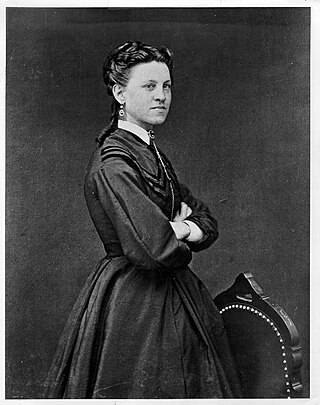
Idawalley Zoradia Lewis was an American lighthouse keeper noted for her heroism in rescuing people from the seas.
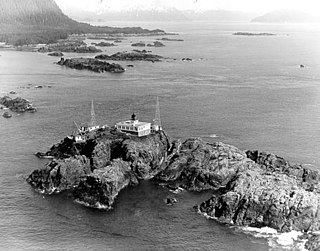
The Cape Spencer Light is a lighthouse in Alaska, United States, next to the entrance to Cross Sound and Icy Strait. The light is still an active aid to navigation. It is located on an islet in the southernmost end of Glacier Bay National Park and Preserve.
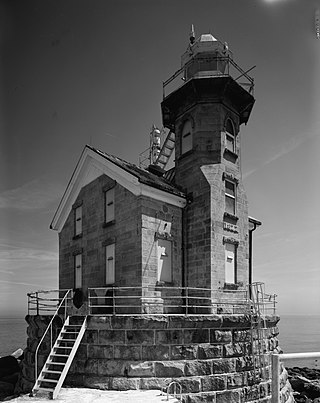
Stratford Shoal Light, officially Stratford Shoal Light, is a lighthouse on a shoal in the middle of Long Island Sound approximately halfway between Port Jefferson, New York and Bridgeport, Connecticut.
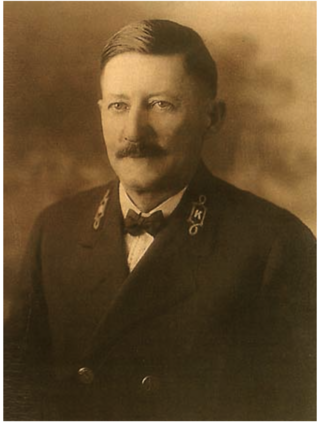
Frank Albert Drew (1864–1931) was a lighthouse keeper. He was Assistant Keeper Pilot Island Light from 1899 to 1903, First Assistant Keeper, Green Island Light-Station from 1903 to 1909, and Keeper of Green Island Light-Station from 1904 to 1929.

Drum Point Light Station also known as Drum Point Lighthouse is one of four surviving Chesapeake Bay screw-pile lighthouses. Originally located off Drum Point at the mouth of the Patuxent River, it is now an exhibit at the Calvert Marine Museum.

The ruined lighthouse at Waugoshance protects boats from a shoal area at the northern end of Lake Michigan. The lighthouse is located in Emmet County, Michigan, United States, and in U.S. Coast Guard District No. 9. It is approximately 15 miles (24 km) west of Mackinaw City. Due to erosion and deterioration, the lighthouse is deteriorating and critically endangered, and likely to fall into the lake in the near future.

Bird Island Light is a historic lighthouse at the entrance to Sippican Harbor in Marion, Massachusetts. Built in 1819, its tower is a well-preserved example of an early 19th-century masonry lighthouse. The tower and the island on which it stands were added to the National Register of Historic Places as Bird Island Light on September 28, 1987.

The Kincardine Lighthouse is a historic lighthouse located in Kincardine, Ontario, near the mouth of the Penetangore River. Built in 1881, it is 24.4 metres tall and was built above the light keeper's home. The tower is eight sided and sits on a stone foundation. The facility has been renovated and is now the Kincardine Yacht Club and a museum. It is open for tours from July 1 to Labour Day.

The Ile Parisienne Light was built in 1911 on the southern tip of remote Ile Parisienne in the middle of Whitefish Bay on Lake Superior on a major shipping lane for ingress/egress to the Soo Locks. It is now a well-known landmark to shipping traffic and pleasure craft. The light is automated and remains seasonally active.

USCGC William Tate (WLM-560) is a Keeper-class coastal buoy tender of the United States Coast Guard. Launched in 1999, she is home-ported in Philadelphia, Pennsylvania. Her primary mission is maintaining over 260 aids to navigation on the Delaware River, in Delaware Bay and in nearby waterways. Secondary missions include marine environmental protection, search and rescue, and security. She is assigned to the Fifth Coast Guard District.
References
- ↑ "North Carolina Deaths, 1931-1994," database, FamilySearch (https://familysearch.org/ark:/61903/1:1:FPC8-2B5 : 17 July 2017), William J. Tate, 08 Jun 1953; citing Crawford, Currituck, North Carolina, v 16A cn 16046, State Department of Archives and History, Raleigh; FHL microfilm 1,926,994.
- ↑ "United States, GenealogyBank Historical Newspaper Obituaries, 1815-2011", database, FamilySearch (https://www.familysearch.org/ark:/61903/1:1:Q59T-M7Q3 : 28 July 2020), Capt William J , Or Bill Tate, 1953.
- ↑ "William Tate and his daughter at first flight stone marker". Wright Brothers Photographs. 1938-01-01.
- 1 2 3 The North Carolina Historical Review. North Carolina Historical Commission. 2003. p. 406.
- ↑ Tise, Larry E. (2019-03-22). Circa 1903: North Carolina's Outer Banks at the Dawn of Flight. UNC Press Books. p. 227. ISBN 978-1-4696-5115-6.
- ↑ U.S. Air Services. Air Service Publishing Company. 1927. p. 20.